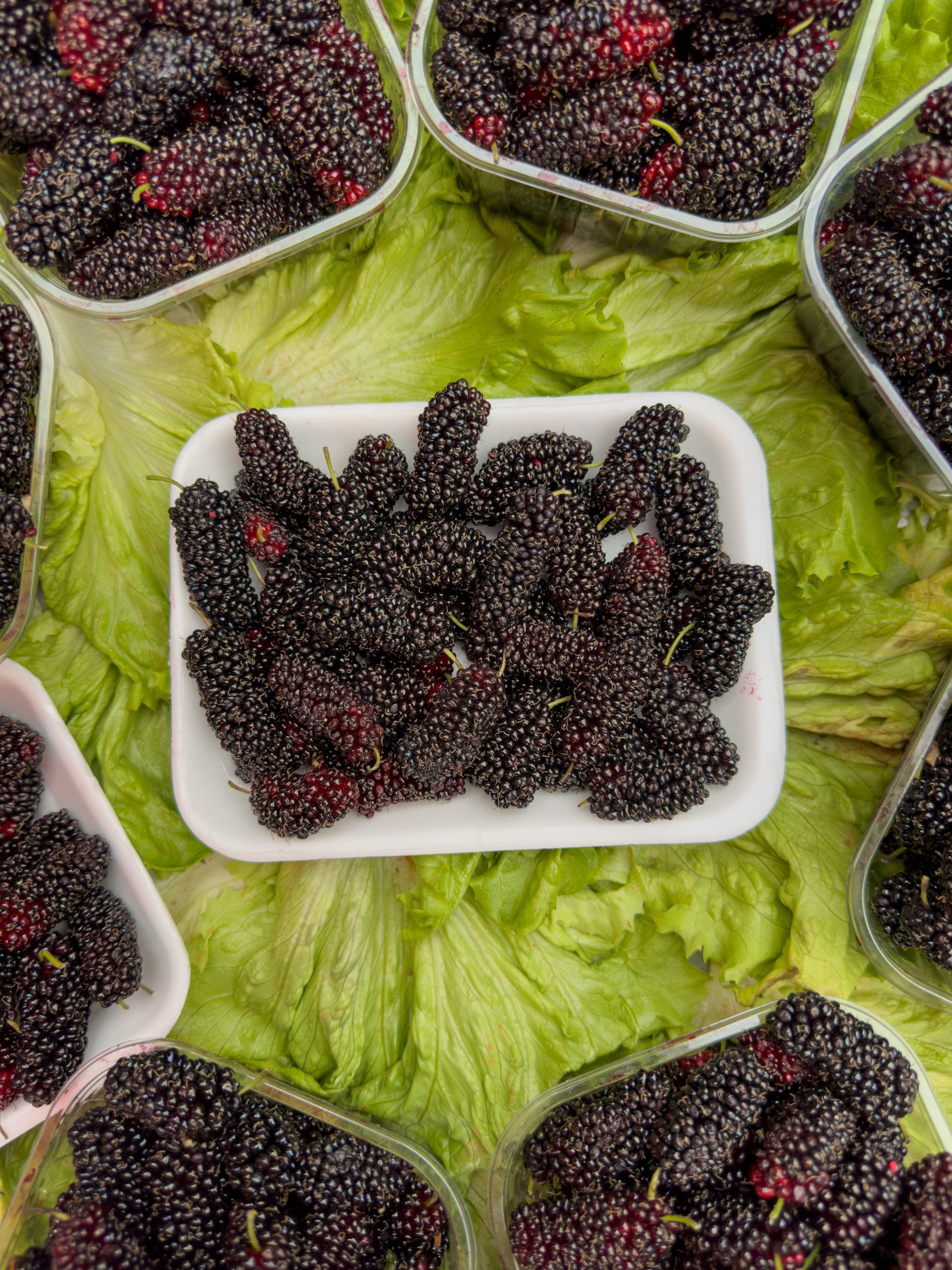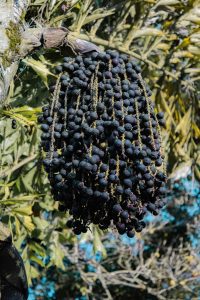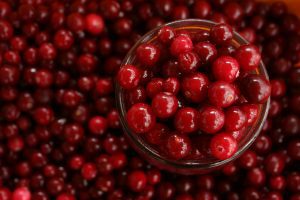
What Are Mulberries?
Mulberries are the sweet, juicy fruits produced by various species of deciduous trees belonging to the Morus genus. These trees are commonly found in temperate regions around the world. Mulberry trees can be categorized into three main types: Morus alba (white mulberry), Morus nigra (black mulberry), and Morus rubra (red mulberry).
The berries, usually small and elongated, come in different colors, including red, white, and black, depending on the species. Mulberries are known for their sweet taste and are often consumed fresh, dried, or used in various culinary applications, such as jams, jellies, desserts, and beverages.
In addition to their delicious flavor, mulberries are a rich source of essential nutrients, including vitamin C, vitamin K, iron, potassium, and dietary fiber. They also contain anthocyanins, which are antioxidants that contribute to the fruit’s color and potential health benefits.
Mulberries have been traditionally used in traditional medicine for their potential anti-inflammatory and anti-diabetic properties. They have gained popularity as a nutritious and versatile fruit, offering a unique and enjoyable addition to a balanced diet. Whether eaten fresh or incorporated into various dishes, mulberries provide a tasty and healthful option for those seeking a diverse range of fruits.
When Do We Eat Mulberries?
Mulberries are typically in season during late spring to early summer, depending on the specific variety and the region’s climate. The exact timing can vary based on factors such as geographical location, weather conditions, and the specific type of mulberry tree.
In many regions, especially in temperate climates, the mulberry season typically occurs from late spring to early summer, roughly spanning from May to July. The berries ripen on the trees during this period, becoming sweet, juicy, and ready for harvest.
The most common way to consume mulberries is to eat them fresh, directly from the tree. They can also be used in various culinary applications, such as making jams, jellies, desserts, and beverages. Additionally, mulberries can be dried for later consumption, providing a year-round supply of this nutritious fruit.
It’s important to note that the specific timing of mulberry season can vary, and local conditions play a significant role. To enjoy fresh mulberries, it’s advisable to keep an eye on the local growing season and harvest the berries when they are ripe, plump, and flavorful.
| Variety | Season | Culinary Uses | Nutritional Benefits |
|---|---|---|---|
| White Mulberry (Morus alba) | Late spring to early summer | Fresh consumption, jams, jellies, desserts, beverages | Rich in vitamin C, vitamin K, iron, potassium, and fiber |
| Black Mulberry (Morus nigra) | Late spring to early summer | Fresh consumption, jams, jellies, desserts, beverages | Contains anthocyanins, antioxidants, and various nutrients |
| Red Mulberry (Morus rubra) | Late spring to early summer | Fresh consumption, jams, jellies, desserts, beverages | High in vitamin C, iron, and dietary fiber |
This table provides an overview of different mulberry varieties, their typical seasons, common culinary uses, and key nutritional benefits. Keep in mind that the information may vary based on specific regional conditions and tree varieties.
Health Benefits of Mulberries
Mulberries offer a range of health benefits, thanks to their rich nutritional profile. Here are some of the key health benefits associated with consuming mulberries:
- Rich in Antioxidants:
- Mulberries contain various antioxidants, including anthocyanins, quercetin, and resveratrol. These compounds help neutralize harmful free radicals in the body, protecting cells from oxidative stress and inflammation.
- Vitamin C Boost:
- Mulberries are an excellent source of vitamin C, which plays a crucial role in supporting the immune system, promoting skin health, and acting as an antioxidant.
- Dietary Fiber:
- Mulberries are high in dietary fiber, aiding digestion and promoting a healthy digestive system. Fiber helps regulate bowel movements, prevent constipation, and support overall gut health.
- Iron Content:
- Mulberries provide a source of iron, an essential mineral for the production of hemoglobin. Adequate iron intake supports oxygen transport in the blood and helps prevent iron-deficiency anemia.
- Potassium for Heart Health:
- Mulberries contain potassium, a mineral that helps regulate blood pressure and support cardiovascular health by promoting proper muscle and nerve function.
- Supports Healthy Blood Sugar Levels:
- Some studies suggest that mulberries may help regulate blood sugar levels, making them a potential dietary addition for those managing diabetes.
- Anti-Inflammatory Properties:
- The antioxidants and compounds found in mulberries contribute to their potential anti-inflammatory effects, which may help reduce inflammation in the body.
- Eye Health:
- Mulberries contain compounds like anthocyanins, which have been linked to potential benefits for eye health. They may help protect against age-related macular degeneration and other vision-related issues.
- Bone Health:
- Mulberries provide vitamin K, which plays a role in bone metabolism and supports overall bone health.
It’s important to note that while mulberries offer these health benefits, moderation is key, as excessive consumption may lead to unwanted effects. As with any dietary changes, individuals with specific health conditions should consult with a healthcare professional for personalized advice.
Nutritional Value of Mulberries
Here’s the nutritional value of mulberries presented in a table (values are approximate and based on a 100-gram serving):
| Nutrient | Amount per 100g |
|---|---|
| Calories | 43 kcal |
| Water Content | 88 g |
| Protein | 2.1 g |
| Carbohydrates | 9.8 g |
| – Dietary Fiber | 2.1 g |
| – Sugars | 8.1 g |
| Fat | 0.4 g |
| Vitamin C | 36.4 mg (61% RDA) |
| Vitamin K | 10.8 mcg (14% RDA) |
| Potassium | 194 mg |
| Calcium | 39 mg |
| Iron | 1 mg |
| Magnesium | 18 mg |
| Phosphorus | 23 mg |
These values provide an overview of the nutritional content of mulberries, showcasing their richness in vitamins, minerals, and antioxidants. It’s important to note that actual values may vary based on factors such as variety, ripeness, and cultivation methods.
Types of Mulberries
There are several types of mulberries, belonging to the Morus genus. The most common species include Morus alba (white mulberry), Morus nigra (black mulberry), and Morus rubra (red mulberry). Here’s an overview of each:
- White Mulberry (Morus alba):
- Characteristics: White mulberries are originally native to Asia but have been widely cultivated in various regions. They have a sweet taste and come in various colors, including white, pink, and purple when ripe.
- Uses: White mulberries are often consumed fresh, dried, or used in jams, jellies, and desserts. The leaves of the white mulberry tree are also the primary food source for silkworms.
- Black Mulberry (Morus nigra):
- Characteristics: Black mulberries are native to western Asia. They are known for their large, juicy, and sweet berries, which are typically dark purple to black when fully ripe.
- Uses: Black mulberries are enjoyed fresh, dried, or in various culinary applications such as jams and wines. They have a more intense flavor compared to white mulberries.
- Red Mulberry (Morus rubra):
- Characteristics: Red mulberries are native to North America. The berries are usually red to dark purple when ripe and have a sweet and flavorful taste.
- Uses: Red mulberries are consumed fresh or used in jams and desserts. They are less commonly cultivated than white and black mulberries.
- Pakistan Mulberry (Morus macroura):
- Characteristics: Also known as Himalayan mulberry, this species is native to the Himalayan region. The fruit is large and has a sweet taste.
- Uses: Similar to other mulberries, Pakistan mulberries are consumed fresh, dried, or used in various culinary applications.
- Texas Mulberry (Morus microphylla):
- Characteristics: Native to the southwestern United States, Texas mulberries are smaller and have a sweeter taste. The berries can range from red to purple.
- Uses: Texas mulberries are consumed fresh and can be used in similar ways to other mulberry varieties.
These types of mulberries may have variations in taste, size, and color, but they all share a reputation for being nutritious and delicious fruits. The specific variety available in a region depends on factors like climate and local cultivation practices.
Signs of Ripe, Signs of Raw and Signs of Rotten Mulberries
Signs of Ripe Mulberries:
- Color:
- The color of ripe mulberries varies based on the variety. White mulberries are generally white, pink, or purple when ripe, while black mulberries turn dark purple to black, and red mulberries become red to dark purple.
- Texture:
- Ripe mulberries should be plump, juicy, and have a slightly soft texture. They should yield to gentle pressure without being overly mushy.
- Sweet Aroma:
- Ripe mulberries emit a sweet and fruity aroma. If they have a fragrant smell, it’s an indication that they are likely ripe.
- Easy Separation:
- When gently touched or shaken, ripe mulberries should easily separate from the stem. If they cling tightly to the stem, they may not be fully ripe.
Signs of Raw or Underripe Mulberries:
- Color:
- Underripe mulberries may appear greenish or pale in color, depending on the variety. They might not have developed their full coloration.
- Firmness:
- Underripe mulberries tend to be firmer and lack the softness associated with ripe berries. They might feel slightly hard to the touch.
- Tart Taste:
- If the mulberries taste more tart than sweet, it’s an indication that they are not fully ripe. Ripe mulberries should have a balanced sweetness.
- Difficulty Separating:
- Underripe mulberries may be challenging to separate from the stem. If they resist detachment, they might need more time to ripen.
Signs of Rotten Mulberries:
- Mold or Discoloration:
- Rotten mulberries may show signs of mold, dark spots, or discoloration. Inspect the berries for any unusual or off-putting colors.
- Unpleasant Smell:
- Rotten mulberries emit a foul or fermented odor. If the berries have a bad smell, it’s an indication of spoilage.
- Sliminess:
- Rotten mulberries can become slimy or mushy. Check for any signs of excessive softness or a slimy texture when handling the berries.
- Wrinkling:
- Mulberries that are past their prime may start to wrinkle or shrink. A healthy berry should maintain its plumpness.
When selecting mulberries, look for the signs of ripeness mentioned earlier. Additionally, promptly discard any berries that show signs of spoilage to ensure you consume them at their freshest and most flavorful state.
Summary
Mulberries come in various varieties, including white, black, and red, each with unique characteristics. Signs of ripe mulberries include vibrant color, a slightly soft texture, a sweet aroma, and easy separation from the stem. Underripe mulberries are firmer, less sweet, and may have a greenish hue. Rotten mulberries display mold, discoloration, a foul smell, sliminess, or wrinkling. When selecting mulberries, choose those that exhibit signs of ripeness and avoid any showing signs of spoilage.






